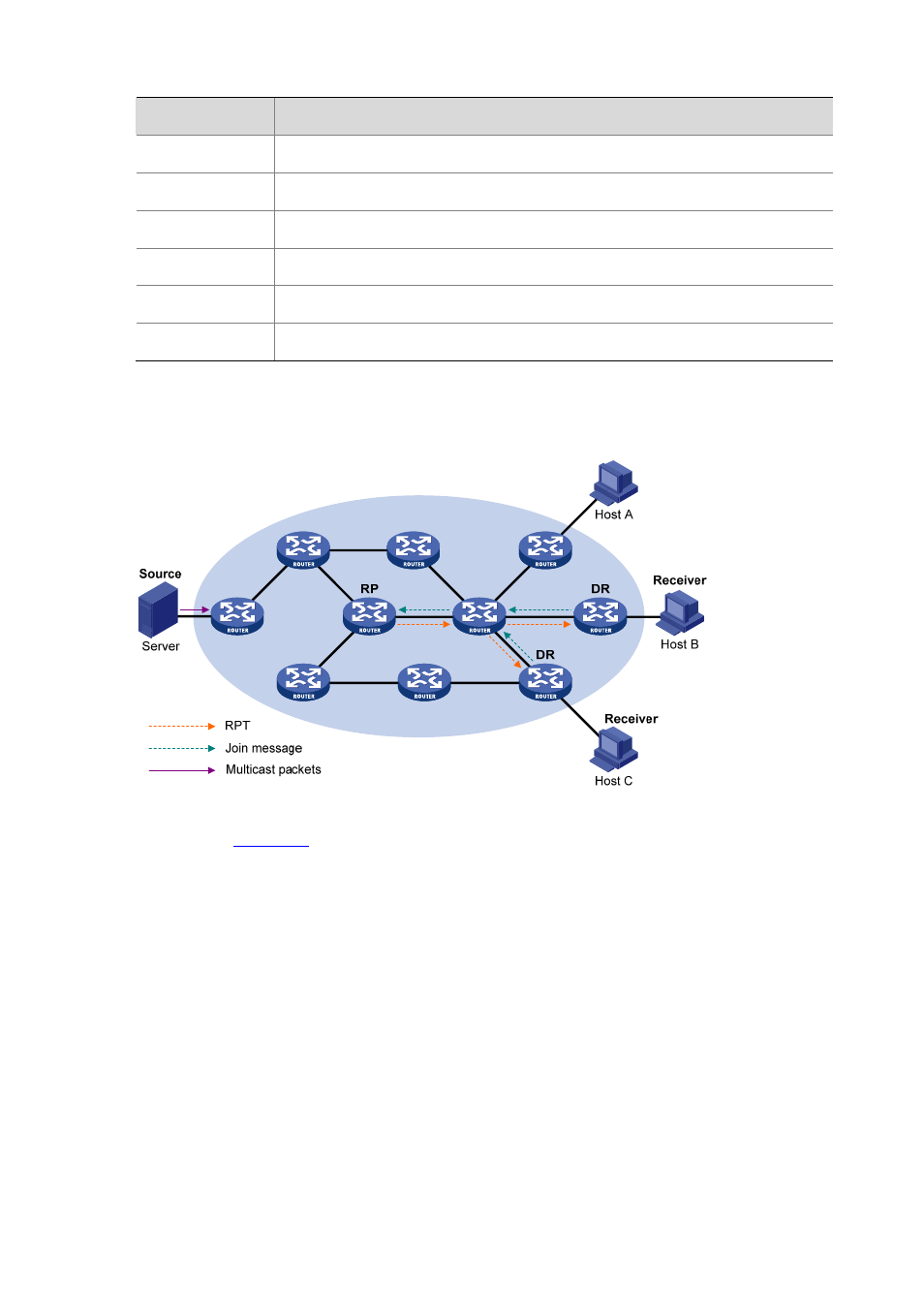Rpt establishment – H3C Technologies H3C S7500E Series Switches User Manual
Page 146

6-9
Value
Description
G
IP address of the multicast group
M Hash
mask
length
C
i
IP address of the C-RP
&
Logical operator of “and”
XOR
Logical operator of “exclusive-or”
Mod
Modulo operator, which gives the remainder of an integer division
RPT establishment
Figure 6-5 RPT establishment in a PIM-SM domain
As shown in
, the process of building an RPT is as follows:
1) When a receiver joins multicast group G, it uses an IGMP message to inform the directly
connected DR.
2) Upon getting the receiver information, the DR sends a join message, which is hop by hop
forwarded to the RP corresponding to the multicast group.
3) The routers along the path from the DR to the RP form an RPT branch. Each router on this
branch generates a (*, G) entry in its forwarding table. The * means any multicast source.
The RP is the root, while the DRs are the leaves, of the RPT.
The multicast data addressed to the multicast group G flows through the RP, reaches the
corresponding DR along the established RPT, and finally is delivered to the receiver.
When a receiver is no longer interested in the multicast data addressed to multicast group G,
the directly connected DR sends a prune message, which goes hop by hop along the RPT to
the RP. Upon receiving the prune message, the upstream node deletes the interface connected
with this downstream node from the outgoing interface list and checks whether it itself has
